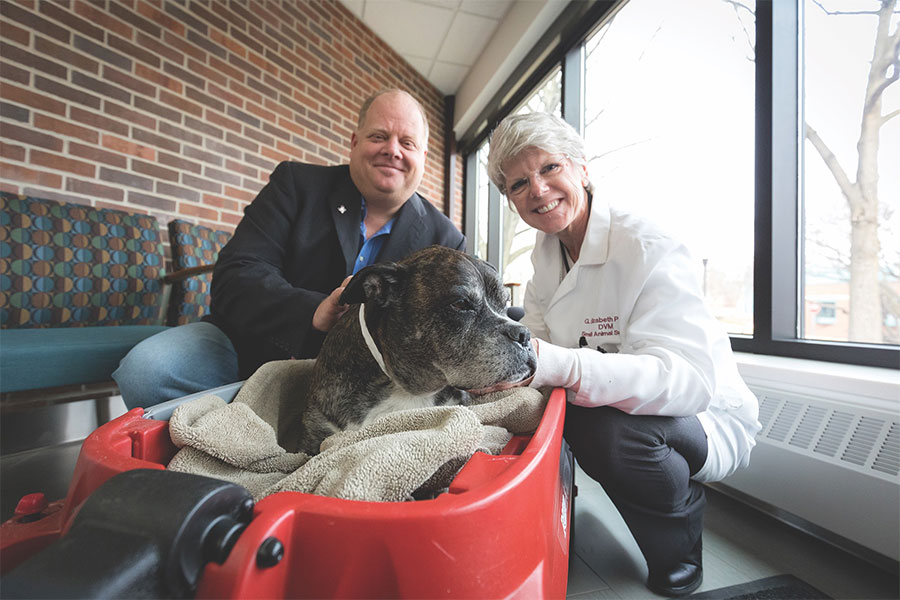
Batman, Otto, Alfie, and Huck have all shared the same title of canine cancer patient. They and other dogs enrolled in groundbreaking clinical trials at the University of Minnesota College of Veterinary Medicine also share another title: medical pioneers.
For 15 years, these and other dogs participating in the Canine Brain Tumor Clinical Trials Program have helped researchers deepen their understanding of glioblastoma—a type of brain cancer that is notoriously difficult to treat—and develop a targeted combination of immunotherapy and surgery that has improved the survival rates of patients that receive it.
To date, more than 400 dogs have been treated through the program, which is headed by Liz Pluhar, professor of surgery in the Department of Veterinary Clinical Sciences.
Fifteen years ago, Batman, a shepherd-mix whose black coloring and pointy ears earned him the name, was among those trailblazers. In 2008, Pluhar partnered with neurosurgeon Stephen Haines and successfully performed the first steps of an experimental procedure by removing Batman’s brain tumor and following up with an injection of gene therapy. After the surgery, Batman received vaccine injections created from tumor tissue removed during his procedure. These injections caused his immune system to recognize any residual brain tumor cells and respond.
One year later, a brain scan revealed no evidence of cancer and Batman received the all-clear. He later passed in 2010 from complications of an unrelated illness, but his story lives on in hundreds of dogs that have since benefited from treatment.
“When I started doing this, the one thing that I kept hearing from people over and over again was that what I was doing gave them hope,” Pluhar says. “Over all the years we've been doing this, giving somebody hope that there's something that we can do for their pet … has been very rewarding.”
The success of the program’s innovative therapies has been good news for not only canine patients, but for human patients diagnosed with glioblastoma. Both humans and canines exhibit a similar immune response to tumors, and it’s that immune response that researchers have successfully manipulated in dogs to effectively kill cancer cells.
Over time, the number of therapies and combinations administered to dogs in the program has grown as new treatments have been developed. Vaccine-based immunotherapy and gene-based therapy remain part of the clinical trial but a breakthrough to improve the effectiveness of both therapies came at the hands of Michael Olin, associate professor, and Christopher Moertel, professor, both in the Department of Pediatrics at the U of M Medical School.
Olin manufactured peptides that would override a tumor’s efforts to protect itself from the body’s immune response. The increased effectiveness of the enhanced therapy in canine trials has doubled survival times in the dogs treated and served as the foundation for the launch of the latest round of human clinical trials at the U of M.
“The opportunity to actually see the work that we did in dogs being translated to human patients, meeting some of the human patients that had received the therapy, and hearing the stories that they would tell about how much better they felt when they were getting immunotherapy has been incredible,” Pluhar says.
In 2022, the American Cancer Society estimated that 1.9 million people were diagnosed with cancer and another 600,000 died as a result of the disease. The numbers paint a stark reality and underline the need for treatments like those developed at the University of Minnesota.
This story was adapted from the original at the College of Veterinary Medicine.
- Categories:
- Health




